
16 minute read
The Cos of C ruising
By Matt & Amy Humphreys
When we set out from England three years ago to sail around the world, you would think that our biggest worry would be crossing oceans and storms. But no. In fact, our biggest worry was whether we could really afford to do it. We spent many nights fretting about whether our dream was even possible. The costs of an oceangoing yacht and the equipment required to fit it out are both readily available and clear (we are not going to go into those here). However, the annual living costs were shrouded in mystery. We were told things along the lines of, “It generally costs us this much, but that’s excluding X and depends on Y.” The only way to find out seemed to be to get out there and do it. If we had to return earlier than planned, then so be it. So, when we set off full-time sailing we got into the habit of tracking every bit of money we spent. Yes, we have tracked EVERY - SINGLE - PENNY for the last three years, from mooring fees to a loaf of bread. By carefully tracking our costs, we reduced our fear of being unable to afford the trip as we realised how affordable cruising could be. We have this information and we can now share it in the hope that it may take some of the fear from someone else thinking of taking the leap to making their own dreams a reality. From talking to other cruisers, it seems that what it costs to cruise depends on where you sail, what you sail, and your attitude towards spending money. It is therefore important to understand what our personal figures are based upon: Latitudes & Attitudes
Advertisement
ruising C of
Where we sail
The figures here are averaged out over the last three years, in which time we have been continually sailing from England, down the coast of Spain and Portugal, the Caribbean, the Panama Canal, two seasons in the South Pacific Islands, New Zealand, and now Australia.
What we sail
Florence is a 35-year-old, 37-foot fiberglass monohull. Although not the most basic cruiser out there by any means, she is smaller and simpler (read cheaper to maintain) than the average liveaboard cruising boat. You can view a video tour of Florence on our YouTube channel, “Sailing Yacht Florence.”
os C he T
Our attitude towards spending money
Friends have been known to call us tight. The reason that we have been able to take a break from work at a relatively young age is that we like to see value for the money we spend. The less we spend, the more time we get to spend living the life we love. Who needs more incentive than that? We are not the most frugal cruisers out here, but we are certainly towards the frugal end of the scale. Our costs will hopefully provide a baseline to start estimating your own potential costs if you are following a similar route.

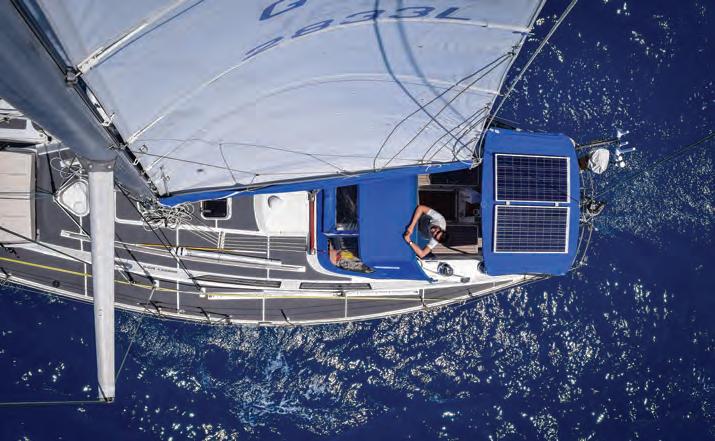
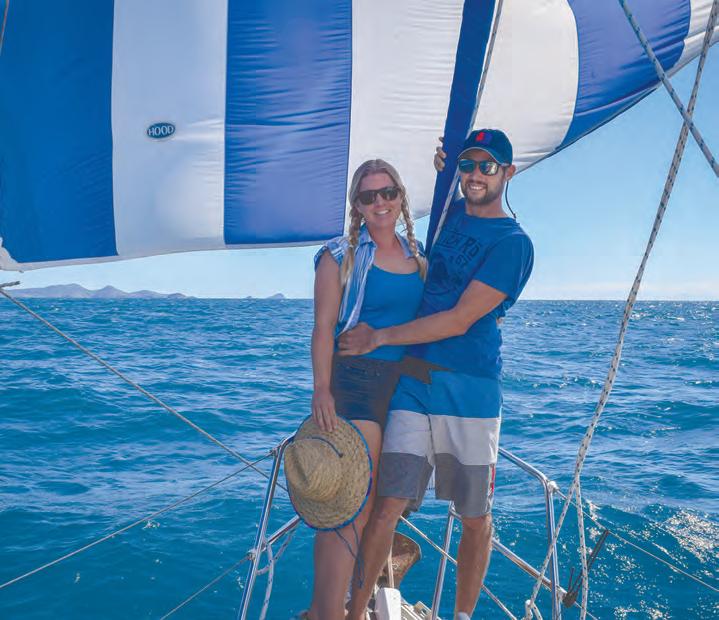
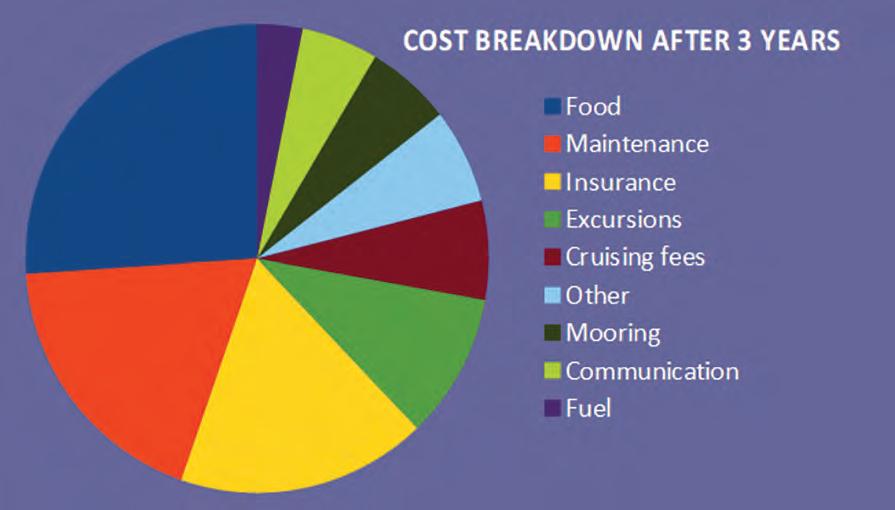
Cost Breakdown
Over the three years of cruising we have averaged an annual cost of £13,434 (£6,719 per person) per year. That is USD $17,113 per year or $8,557 per person per year. We have broken our costs down into nine categories: Food and Drink, Maintenance, Mooring, Cruising Fees, Insurance, Moorings/Visa Costs, Communications, Fuel, Excursions, and Other. We’ll go into each category below: Our expenditure each month fluctuates wildly depending on where we are and what we are doing, from just $75 for a month crossing the Pacific Ocean to $4,168 in New Zealand (travel around New Zealand, re-provisioning, maintenance, insurance renewal, etc.).



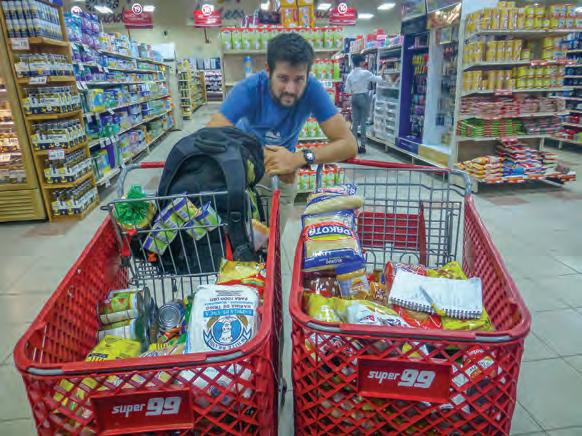
ruising C of FOOD AND DRINK (26%) $4,457 per year / $85 per week Food costs vary massively between countries. From free coconuts and papaya gifts in Fiji and Vanuatu to $15 per white cabbage in the Tuamotus, French Polynesia. As food is our biggest cost, we are able to save a significant amount of os money by stocking up in better value areas (i.e., Europe) and eating simply in areas where food is imported and more expensive (i.e., French Polynesia). This information can all be found online— and it has paid to do our research. If fresh food is $15 per cabbage, we just won’t buy it. There have been many occasions we have walked out of a shop without anything and returned to the boat to make something from our he C remaining dried stores. The majority of our meals are eaten, or at least prepared, on board. This minimises both food waste and cost. It’s much easier to keep track of what needs using and make the most of it if you are cooking from scratch on a regular basis. Whether we are hiking up the closest mountain or taking in the sights of a city, we take food with us unless we are certain that food is easily available and at a good value ashore. Although this category also includes alcohol, alcohol makes up a very small percentage of it. We enjoy the occasional tipple, but drinking regularly is something we sacrifice in order to live the life we love. This all sounds very boring, yet the fact is we do still treat ourselves and get great enjoyment from our food and drink. We are a long way from the rice and lentil diet we anticipated before leaving. Despite the fact that food has consistently been more expensive than England so far, we have found that our grocery costs are similar to what we spent when living on land in England. This is due to T bulk buying and not eating as extravagantly as we used to on land. Our food costs are likely to reduce further this year, as we move into Indonesia, Malaysia, and Thailand. How we save on food • Planning our provisioning: we stock up with good value food/drink when we find it • Learning how to cook more meals from scratch/basic provisions (e.g., we make our own bread, wraps, yoghurt when we can’t get them or they are expensive ashore) • Cutting down on alcohol consumption • Eating/preparing most of our meals onboard; our view is often better than the restaurant's anyway 48 Latitudes & Attitudes www.Lat sAt t s.c om
MAINTENANCE (19%)
$3,192 per year (haul out, parts, and spares) So far we have spent a lot less on maintenance than we expected; there is a general figure in the industry of 10-20% of the boat’s value per year. We have consistently spent much less than this. Be aware that some of the reasons we have managed to spend so much less are: a) Florence was in very good condition before we left England with nearly-new sails, a new engine, new solar panels, a new fridge, new rigging, a new Bimini, and new electrical wiring and batteries. All at a cost prior to setting off so not included in the figures here. b) For the same money we paid for Florence we could have bought a much bigger, less prepared boat which would now be costing us much more to maintain. Bigger boat equals bigger sails, winches, haul out costs, etc., exponentially increasing cost. c) We do all of the work ourselves, so we don’t pay for labour One large cost that has been difficult to dodge is the regular haul out to re-antifoul and maintain the underwater parts of the boat. We have done this twice in the last three years (we find it does not need doing every year). In Australia it cost $606 to have Florence out of the water for three days plus $441 for the antifouling paint. Our biggest single maintenance items since setting off so far have been replacing our boom ($1,205, including shipping to St. Lucia), closely followed by our electric anchor windlass ($1,163). After twelve months of hauling up our 20 kg anchor and 10 mm chain by hand, the windlass is worth its weight in gold. Other maintenance costs include exciting things like antifoul, anchor chain regalvanizing, paint, varnish, polish, gas alarm sensors, engine spares/filters, toilet pumps, anodes, and water filters. Saving money on maintenance • Buying a simple, well maintained boat and ensuring she was kitted out (including spares) before we set off (getting parts delivered is expensive, especially if you need a marina address to wait for them). • Learning how to fix and maintain our boat ourselves or by skills sharing with other cruisers. It’s much easier when you have to do something the 2nd time. • Researching/shopping around to ensure we don’t get stung buying something at twice the price due to location.
INSURANCE (17%)
$2,987 per year (boat insurance, medical insurance) This is a biggie. Boat insurance does not come cheap, especially when you cross oceans and visit remote places that lack repair facilities for yachts. We won’t get into the insurance/no insurance debate here, just state what it costs us to have it. We have held comprehensive medical insurance in all countries and oceans except New Zealand and Australia where there are reciprocal healthcare agreements with the UK. We have absolutely nothing to show for this outlay, but then we are grateful for that as it means nothing really bad has happened to us or Florence.
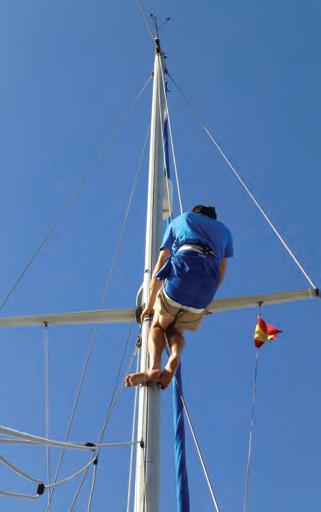
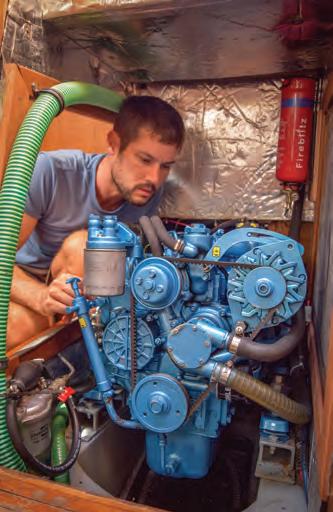
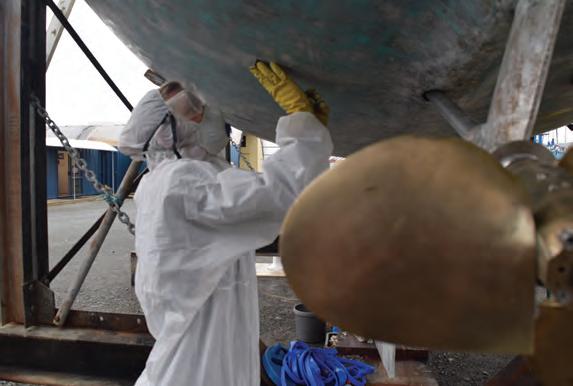
ruising C of
os C he T
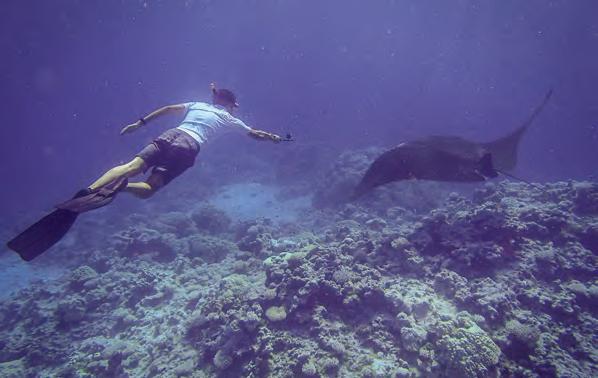

EXCURSIONS (10%)
$1,718 per year(what we spend ashore, excursions, land travel costs, eating out, etc.) Most of the activities we enjoy—hiking, swimming, snorkelling, kayaking, sailing our dinghy, and cycling—are free. Only occasionally do we pay for an activity we cannot lead ourselves. Transport on shore is usually by foot, our folding bikes, or local bus. Travelling via local bus is often cheap and an experience in itself. Each country has a different idea of a “schedule” and of how many people you can pack into one vehicle, little things we like to learn by experience. Occasionally it’s not possible to get a bus to a special site inland and a car hire becomes our best option. We have hired a car for a day three times per year on average, often sharing with friends, family, or other cruisers. In New Zealand, we bought a car and sold it before we left; it cost us $200 for the whole three months that we had it. We include all the ice creams and coffees that we buy in our excursions category. Matt is particularly partial to an ice cream, so this makes up quite a portion of the expenditure. As mentioned in the food category, eating out doesn’t really factor into our budget, but this is where it’s included on the rare occasion (maybe once or twice a year) that it happens. One sacrifice we have made to keep our excursion costs down is not flying home to visit the UK. For us this is by far the hardest sacrifice our budget brings. How we save on excursions • Visiting places where we are at an advantage having our own boat so we don’t feel the need to pay for additional excursions (i.e., The Bay of Islands, New Zealand; The Whitsundays) • Enjoying using our feet or bikes or local transport to get around on shore • Linking up with other cruisers to share costs of excursions and car hire
CRUISING FEES (7%)
$1,163 per year (cruising permits, visas, and check-in costs) Some countries charge over $1,000 for arriving with your boat; some let you in for free. The most expensive country we have traveled through was Panama, where transiting the canal cost us $1,316 plus a $185 cruising fee. Australia was the second most expensive; we paid $720 for two nine-month visas and $266 on biosecurity fees to allow us to bring Florence into the country. French Polynesia was free to check into as European citizens, and New Zealand cost only $25 to check in for six months. Information on charges are detailed on websites like Noonsite and have allowed us to plan our route to avoid areas we felt did not justify the high charges. We crossed the Pacific at the same time as a boat who stopped for a couple of days to refuel in Ecuador without checking the requirements beforehand. They left Ecuador with their extra fuel but also a bill for over $1,000 for just a couple of days in the country. Many countries have additional charges if you check in out of office hours, something that increased their bill and has occasionally caused us to slow down and arrive somewhere the following day. We won’t choose to spend an extra night at sea if it only saves us $10, but we would if it saved us $100.
How we save on cruising fees • Researching ahead of time to know what the costs will be • Avoiding checking into expensive countries or incurring out of hours fees • Avoiding using an agent to help with entry/visa paperwork (this may change in Indonesia) OTHER (7%) $1,120 per year This is all the stuff that doesn’t fit in a category, including things like medical treatments, laundry, clothes, hiking shoes, sunglasses, charts and pilot guides, fishing gear, a secondhand BBQ, anti-malaria drugs, etc. MOORING FEES (6%) $1,020 per year Marinas are expensive and we prefer living at anchor; we have a good anchor and always keep a close eye on the weather. On average, we have spent around three weeks total a year in a marina. This isn’t always necessary, but it makes picking up guests, laundry, provisioning, cleaning, sheltering from bad weather, etc. much easier. Other than a month in New Zealand to travel via car, we have never left Florence for an extended period of time in order to travel home or elsewhere. This significantly reduces both our mooring and transport costs. How we save money on moorings, visas, etc. • Avoiding marinas • Researching good, free anchorages ahead of time so we have options if the weather changes • Investing in a good anchor so anchoring in heavy weather is more practical
COMMUNICATION (5%)
$917 per year (mobile, internet and satellite phone costs) Modern communications are amazing. In the old days, most yachts had SSB radios for communication and weather forecasts. The modern replacement for this is the satellite phone. We have a very basic sat phone plan which costs £55 (USD $70) per month. This is our main source of weather forecasts (grib files) when we are at sea. It also acts as a safety device in case we have an emergency. For example, if one of us had a serious injury we could phone a doctor for advice. When we were in New Zealand and Australia we actually stopped the sat phone plan since we had good mobile phone signal. On top of the satellite phone we usually pick up a SIM card in whatever country we are in for research, social media, etc. In most of the countries we visit, data costs are a lot cheaper than the UK. We share one basic phone to save money and use it as a wi-fi hotspot on board. The more basic the infrastructure in the country, the cheaper and better the mobile data network seems to be. Generally, we have found it to be more cost effective to purchase a SIM card with data rather than sit in an internet cafe for hours, even when we are uploading HD videos to our YouTube channel. How we save money on communications • T aking the most basic sat phone deal to access weather information at sea • Sharing one mobile phone and using it as a wi-fi hotspot for other devices. • A voiding internet cafes
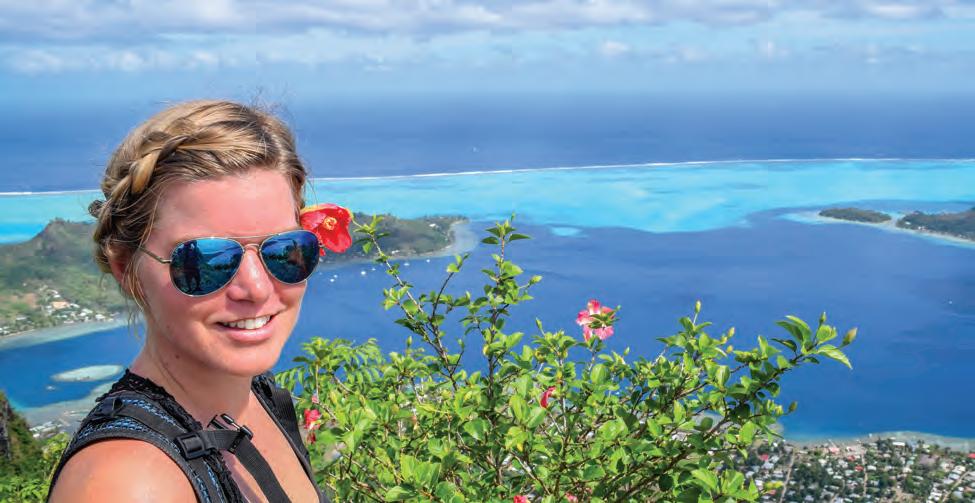
ruising C of
os C he T
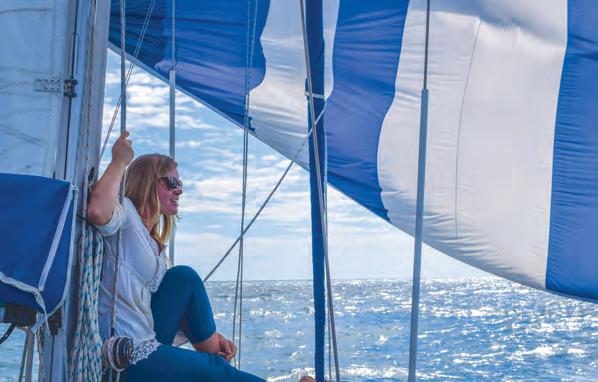
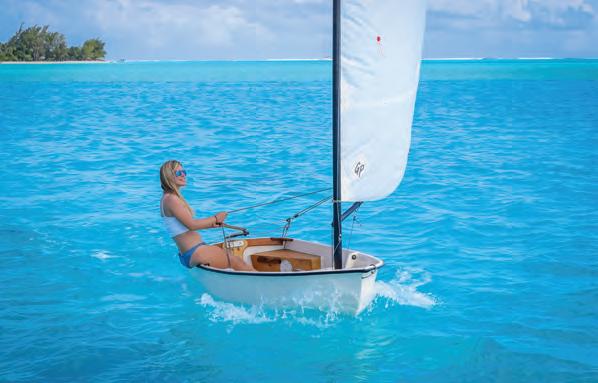
FUEL 3%
$539 (diesel, petrol, and propane/cooking gas) This is a very small number. Florence is a sailing yacht. We like sailing. Unless we need to be somewhere to meet someone on a certain date, we will happily drift along at two knots rather than turn on the engine. The engine is mainly used coming in to or out of anchorages. We have accumulated 400 engine hours over three years from England to Australia (Florence uses 2 liters per hour under motor). This is unfortunately likely to increase when we reach the no-wind areas of Indonesia. As for the dinghy outboard, we rarely use that either, preferring to row or sail the dinghy around rather than use the outboard engine. The outboard engine is used in long, windy dinghy rides or when we have guests on board. We use about 10 liters of dinghy fuel per year. Our batteries are fully powered from our 250 watts of solar panels, meaning we have no need to use the engine or a generator for charging, again saving on fuel costs. The cost of propane (cooking gas) varies wildly from country to country, but it has never been more expensive than in England. We have had to buy new bottles and fittings in the Canary Islands and New Zealand as our own were unable to be refilled. We use around four kilograms of cooking gas per month. How we save money on fuel • Buying a boat that sails well in light winds to help us avoid motoring • Becoming very confident using our spinnaker for ease of sailing in light wind conditions • Fitting enough solar panels to power our needs so we never run the engine for battery power • Gaining enjoyment from moving under sail or rowing the dinghy
Finishing Thoughts
The only things we haven’t included in this budget is the new camera equipment we bought in Australia, as this was kindly provided by our patrons and donations on our written blog: www.SailWithTheFlo. wordpress.com. The support of these kind people is what allows us to continue this voyage around the world with the goal of eventually completing the loop by returning to England. Despite tracking each penny and holding ourselves to a fairly tight budget, we feel like our life is richer than ever. As cheesy as it sounds, we are spending less yet living more. This adventure is what we want from life and we are willing to make a few sacrifices in order to achieve it. Tracking our finances actually adds to our sense of freedom; the less we spend day to day, the longer we will be able to afford to continue this amazing journey together. Who needs any more motivation than that? There are people doing this on smaller boats with tighter budgets than us. Life for them might not always be as comfortable, yet they still have the ability to visit the same places and collect their own priceless memories. If you would like to find out more about our adventures, take a look at our YouTube channel, “Sailing Yacht Florence,” or our written blog, www.SailWithTheFlo.wordpress.com.



